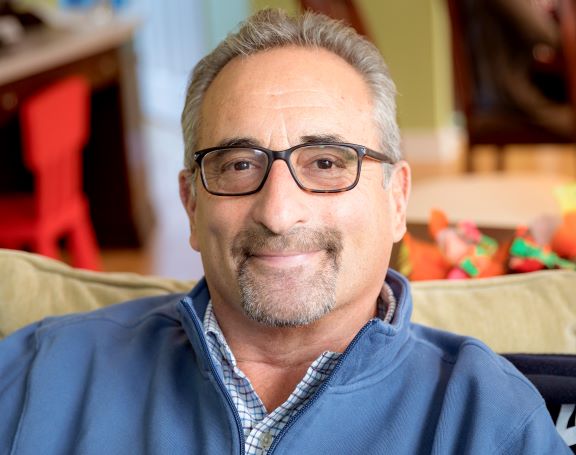
Robert never considered himself vulnerable to heart failure. An active 70-year old, the Pompano Beach resident felt healthy and energetic. So when he started noticing that his usual walks to the beach were leaving him panting for breath, he knew something was off – but didn’t think it serious enough to seek medical attention. Then, one day in August 2020, neighbors at his condo discovered him on a lounge chair by the pool, unconscious. They couldn’t wake him.
“One minute I was reading a book by the pool,” Robert recalls, “and the next I was waking up in the emergency room.”
Doctors felt that the event was cardiac in nature and that Robert was at risk for another event.
"Robert had complete heart block when our team first saw him, but his heart function was abnormal, which is unusual for someone his age," says Daniel Weitz, MD, FHRS, and Robert's electrophysiologist. "I suspected he suffered from cardiomyopathy, which can cause sudden cardiac arrest and requires intervention."
Because Robert needed both pacing and defibrillation capabilities within his device, his doctors recommended he be implanted with a VIGILANT™ X4 cardiac resynchronization therapy defibrillator (CRT-D).
A Shock to the Heart
A CRT-D is a special device for certain heart failure patients who are also at high risk for sudden cardiac death. While functioning like a normal pacemaker to treat slow heart rhythms, a CRT-D device also delivers small electrical impulses to the left and right ventricles that can help the heart pump more efficiently for these patients. Importantly for Robert, a CRT-D device can also treat arrhythmias that can lead to sudden cardiac arrest. If the device senses dangerously fast heartbeats – the sort of rapid rhythm that can lead to death within mere minutes – it delivers a shock to the heart, restoring a normal rhythm.
In Robert’s case, his CRT-D may have saved his life.
“I Felt My Body Jerk”
It happened nearly a year later, in June 2021. After finishing breakfast with friends at his local deli, Robert went on his daily three-mile walk. He had just returned to his condo parking lot when he began to experience ventricular tachycardia, an arrhythmia that causes the heart to beat much faster than normal. He collapsed to the ground.
Robert’s heart had stopped providing enough blood to his brain. He laid there, unconscious, for ten full seconds. That’s when his CRT-D kicked in with a shock that restored his normal heartbeat.
“I felt my body jerk,” says Robert. “I woke up and started to take stock of what had happened.” Robert slowly got up, checked himself for injuries – and walked away.
Amazingly, Robert’s collapse and resuscitation was captured on his condo’s parking lot security camera, shown here.
Peace of Mind
Following his collapse, Robert was surprised to discover that he felt perfectly fine.
“Honestly, if I hadn’t known that I’d collapsed, I never would have thought anything happened,” he says. “I felt completely normal.”
Robert was monitored in the hospital and released. Since then, he has gone on to live his usual, active lifestyle. He keeps his LATITUDE™ Home Monitoring System next to his bedside, giving his physicians the ability to monitor him remotely, and providing valuable information about his heart health to discuss in his follow-up visits. He is grateful for the attentions of Dr. Weitz and his cardiology teammates, Drs. Elias Collado and Felipe Albuquerque. And now that Robert has experienced the powerful capabilities of his CRT-D, he feels much more at ease.
“The VIGILANT CRT-D gives me peace of mind,” says Robert. “I feel confident working, going to the gym, and exercising, knowing that my device works. It is very comforting.”
Learn more about heart failure, including its causes, risk factors, and symptoms.